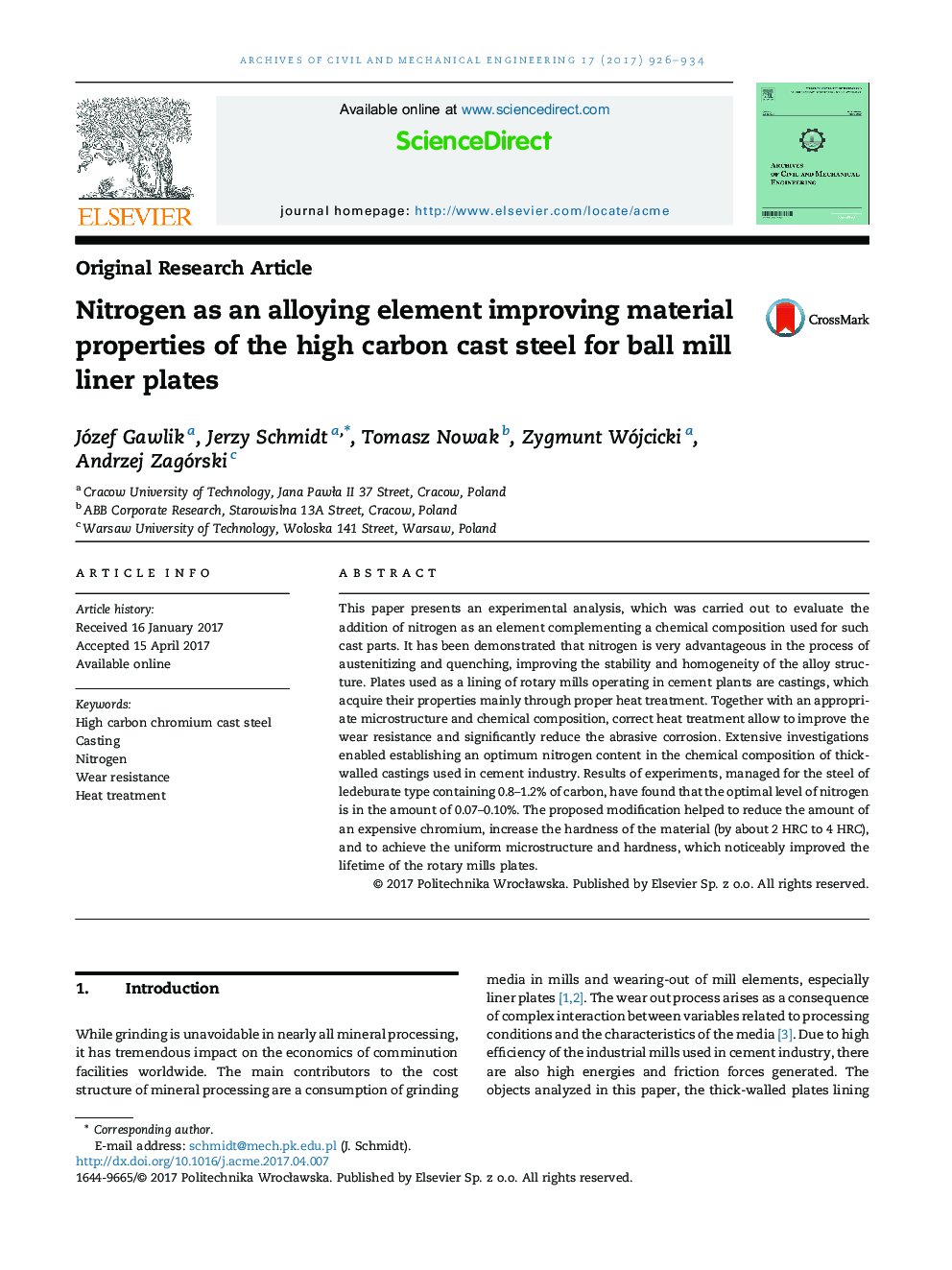| Article ID | Journal | Published Year | Pages | File Type |
|---|---|---|---|---|
| 6694873 | Archives of Civil and Mechanical Engineering | 2017 | 9 Pages |
Abstract
This paper presents an experimental analysis, which was carried out to evaluate the addition of nitrogen as an element complementing a chemical composition used for such cast parts. It has been demonstrated that nitrogen is very advantageous in the process of austenitizing and quenching, improving the stability and homogeneity of the alloy structure. Plates used as a lining of rotary mills operating in cement plants are castings, which acquire their properties mainly through proper heat treatment. Together with an appropriate microstructure and chemical composition, correct heat treatment allow to improve the wear resistance and significantly reduce the abrasive corrosion. Extensive investigations enabled establishing an optimum nitrogen content in the chemical composition of thick-walled castings used in cement industry. Results of experiments, managed for the steel of ledeburate type containing 0.8-1.2% of carbon, have found that the optimal level of nitrogen is in the amount of 0.07-0.10%. The proposed modification helped to reduce the amount of an expensive chromium, increase the hardness of the material (by about 2 HRC to 4 HRC), and to achieve the uniform microstructure and hardness, which noticeably improved the lifetime of the rotary mills plates.
Related Topics
Physical Sciences and Engineering
Engineering
Civil and Structural Engineering
Authors
Józef Gawlik, Jerzy Schmidt, Tomasz Nowak, Zygmunt Wójcicki, Andrzej Zagórski,
